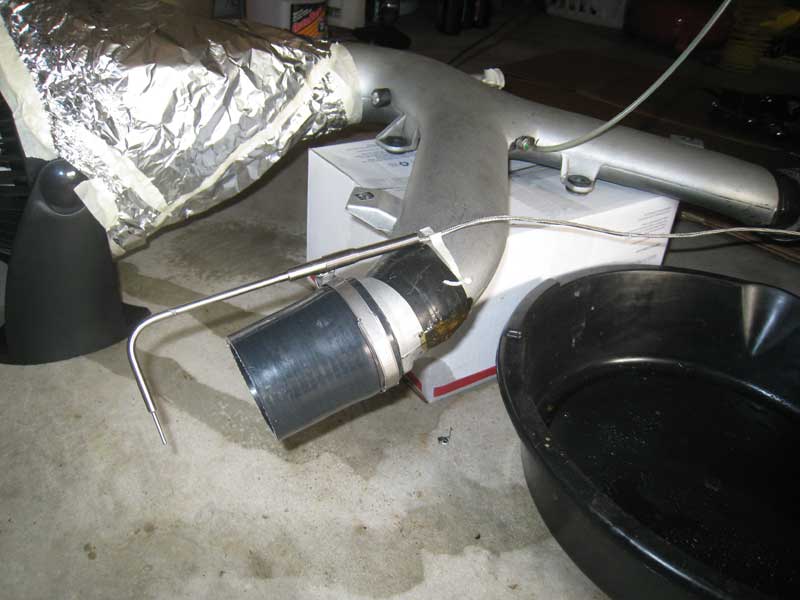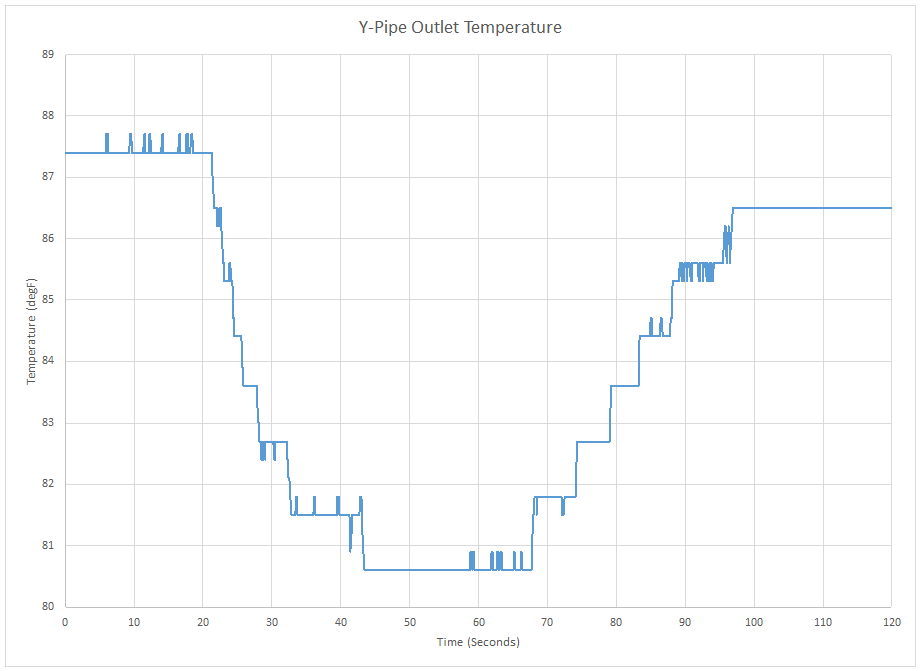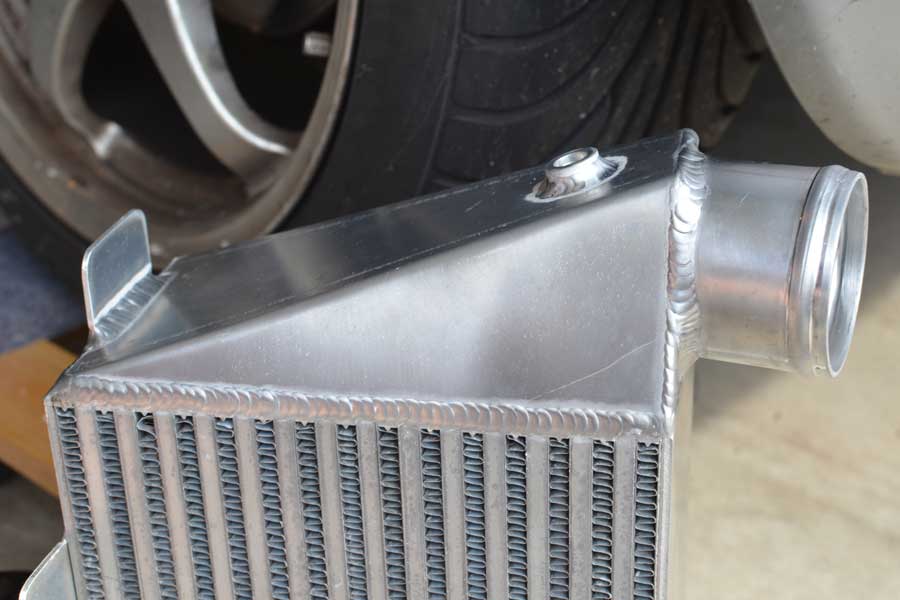Part 1
This is an effort to see what results pre-turbo water injection produces on my Audi B5 S4.
I began by swapping the line out of the Aquamist flow sensor for a smaller line that would connect to the y-pipe.
Next I worked with my stock y-pipe, one that I’ve messed with before, to make some more modifications to.
I added an Aquamist nozzle (0.5mm) to the middle of the y-pipe.
 I went with this location to try and evenly distribute the spray between the two outlet pipes. I also wanted to try and minimize the amount of wall wetting that would occur. To that end I placed the nozzle in a position where the spray pattern would be into the airstream in the opposite direction of the airflow.
I went with this location to try and evenly distribute the spray between the two outlet pipes. I also wanted to try and minimize the amount of wall wetting that would occur. To that end I placed the nozzle in a position where the spray pattern would be into the airstream in the opposite direction of the airflow.
Then I hooked up the pump to make sure the system would spray. The video below shows the outcome of this test.
The amount of water running out of the y-pipe, versus exiting as a spray, caused me some concern.
To get an idea of what was happening I removed the nozzle from the y-pipe and allowed it to spray unhindered into the air. This is shown in the video below:
While I cannot see what is taking place within the y-pipe, it’s a decent guess that the wide angle of the spray cone is causing a good amount of water to be sprayed onto the walls where it coalesces and then runs to the bottom of the y-pipe.
Now I had some additional questions, would this stream of water make it to the turbocharger compressor blades? I purposefully put the injection point in the y-pipe to create a longer path for a water stream to travel.
 There’s a reducer between the turbo inlet pipe and the compressor housing which may provide enough of a rise to keep any standing water from being ingested by the compressor blades.
There’s a reducer between the turbo inlet pipe and the compressor housing which may provide enough of a rise to keep any standing water from being ingested by the compressor blades.
Another question is how effective is the water injection if the quantity of fluid I saw rolling out of the y-pipe is indicative of what happens when the system is operating on the engine?
To try and assess if moving air would produce much different results I hooked up a fan to the y-pipe inlet.
 Because I had not been collecting the run-off water I did not have a good method for assessing if the airflow made much of a difference.
Because I had not been collecting the run-off water I did not have a good method for assessing if the airflow made much of a difference.
I did notice that the temperature of the air coming out of the y-pipe felt cooler when the water spray was active. This led me to attach an air temperature sensor near the y-pipe outlet to see how much the temperature was changing.
 I ran the water spray in conjunction with the fan and recorded the following change in temperature.
I ran the water spray in conjunction with the fan and recorded the following change in temperature.
The chart begins with the fan on but no water being injected. Then the water injection system is activated, which coincides with the outlet air temperature decreasing. Then the water injection system is secured and the outlet air temperature begins to rise.
The temperature does not return to the starting level, which I suspect is a result of excess was in the piping still cooling the passing air slightly.
Conclusions:
I feel that with the insights I have gained through this experiment that pushing forward with the evaluation is appropriate. The amount of wall wetting that occurs does lead me to wonder how effective the bipipe installed nozzles work relative to a more idealized setup.
I may investigate an alternate setup for the nozzle to try and get better mixing. See the next post in this series.
The Intercooler end tank nozzle mounts that I had requested from SRM were an idea for achieving more thorough mixture of fluid and charge air. I will be considering these results when I get around to evaluating the alternative, SMIC, nozzle location.




